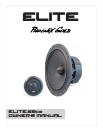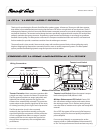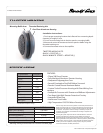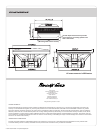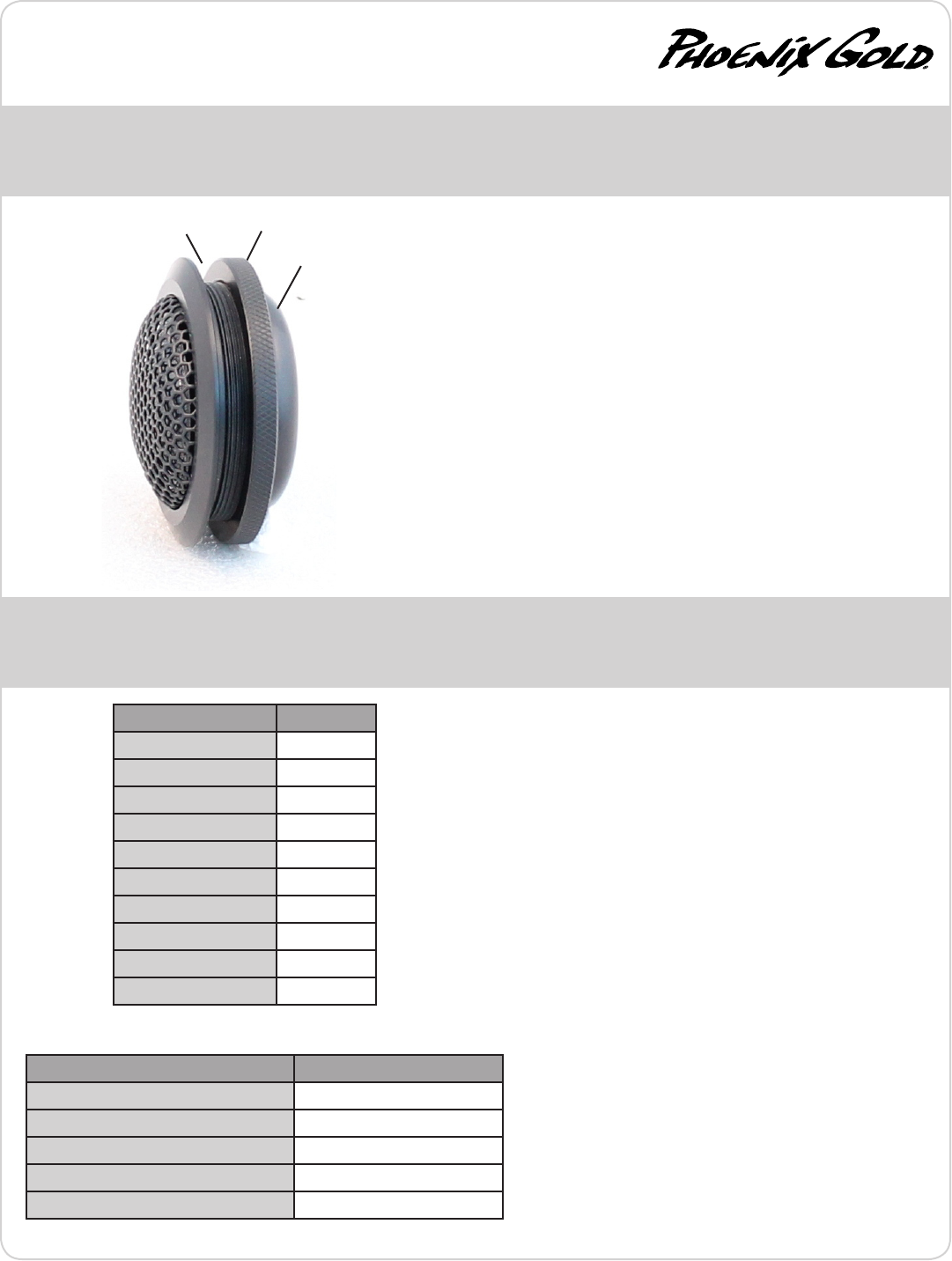
© 2012 Phoenix Gold • www.phoenixgold.com
ELITE.65 Owner’s Manual
TWeeter Mounting
Specifications
T/S Parameters:
ELITE.65cs
Re (Dcr)
3.6
FS (Hz)
55
Sd (SqM)
.0135
BL TM
5.5
Qms
5.38
Qes
.607
Qts
.545
Vas (liters)
13.24
Cms (uM/N)
581.08
Mms (gms)
15.26
Specications: ELITE.65cs
RMS Power Handling 150 watts
PEAK Power Handling 300 watts
Nominal Impedance 4 ohms
Tweeter HP Acoustical Crossover 3.5kHz @ 24dB (LnkRly)
Midrange LP Acoustical Crossover 2.95kHz @ 12dB (BTW)
*Midrange Driver Only
**Specifications subject to change
FEATURES:
• 25mm Silk Dome Tweeter
• Fully Machined Aluminum Tweeter Housing
• Dampened Polypropylene Cone
• Smooth Termination Dual Roll Rubber Surround
• Powder Coated Diecast Aluminum Basket
• Custom Tooled Crossover Housing with Direct Wiring Con-
nections
• Audiophile Crossover with Tweeter and Midbass Adjustments
• Two Stage Light Bulb Tweeter Protection Circuitry
• Integrated Phase Plug
• Interwoven Tinsel Leads
• High Temperature CAE/CAD Motor Structure
Installation Instructions:
1. Find a proper mounting location that is at and has a mounting depth
clearance of roughly 21mm.
2. Cut a 47mm mounting hole in the door panel or mounting bae.
3. Mount and secure the tweeter to the door panel or bae using the
threaded retaining nut.
4. Connect the tweeter wires to the amplier.
TWEETER WIRING NOTE:
BLACK = POSITIVE (+)
BLACK W/WHITE STRIPE = NEGATIVE (-)
(Mounting and Physical Dimensions are located on the back page)
Threaded Retaining Nut
Mounting Baffle Area
One Piece Aluminum Housing
Note on Fully Active Crossover Systems: For the best performance we
always recommend the use of the provided passive crossovers with an
external high pass electronic crossover usually located on the amplifier
or headunit. The passive crossover design is extremely complex as
it “blends” and “smoothes” the tweeter and midrange’s response and
impedances together.
Running the system fully active with an external electronic crossover
(instead of the passive crossovers) for the tweeter and midrange
eliminates all this smoothing and transitional circuitry. The reality is that it
almost guarantees worse performance unless the system is perfectly EQ’d
with precision crossover points. It also eliminates the tweeter protection.
Unless you are sound quality and tuning expert, using the provided
crossovers will deliver the best performance.



